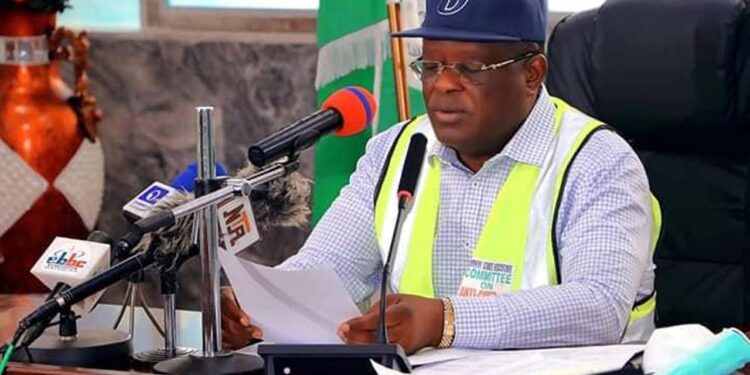The Federal Government is considering replacing the ageing Carter Bridge in Lagos with a N320 billion cable-stayed structure, which is seen as a more sustainable and cost-effective alternative to the N380 billion estimated for comprehensive rehabilitation.

This was revealed by the Minister of Works, Senator Dave Umahi, during an inspection tour of the bridge on Friday, as reported by the News Agency of Nigeria (NAN).
According to Umahi, while Julius Berger has completed 80% of the above-water repairs, recent assessments uncovered severe structural issues beneath the water, including corroded piles and detached caps—similar to the faults that prompted truck restrictions on the Third Mainland Bridge. He noted that previous reports in 2012 and 2019 had already flagged these issues.
Umahi emphasized that constructing a new bridge could provide a lifespan of over 100 years and still cost less than the proposed repairs. The Federal Ministry of Works is currently reviewing proposals from Julius Berger and plans to present its recommendations to President Bola Tinubu upon conclusion of technical assessments.
“The Federal Government is deeply concerned about the current condition of the Carter Bridge,” Umahi said during the inspection alongside engineers from the ministry. “Its state poses serious safety risks and demands urgent attention.”

The NAN report further confirmed that while the cost of rehabilitating the existing structure and its connecting ramps is estimated at N380 billion, the proposed cable-stayed bridge would cost around N320 billion.
So far, only two companies have submitted proposals for ongoing bridge works in Lagos: BuildWell for the Third Mainland Bridge and Julius Berger for the Carter Bridge. The government is currently evaluating both submissions.

Expert Insight and Investor Interest
Thomas Christe, Regional Manager for Julius Berger in the South West, confirmed that the company began rehabilitation work on the Carter Bridge in 2024, focusing initially on above-water elements such as handrails and pile caps. However, the company has since discovered that the extent of underwater deterioration is far more extensive, and the current scope of the contract does not cover the necessary structural interventions.
“In light of our investigations, we recommended a complete replacement as a more viable long-term solution,” Christe stated. “A new bridge could last up to a century, and we already have interest from international investors willing to finance the project.”
Minister Umahi reiterated the importance of focusing on the bridge’s foundational integrity rather than superficial repairs, stressing that deep structural intervention—or a full reconstruction—is necessary to ensure public safety and infrastructure longevity.



